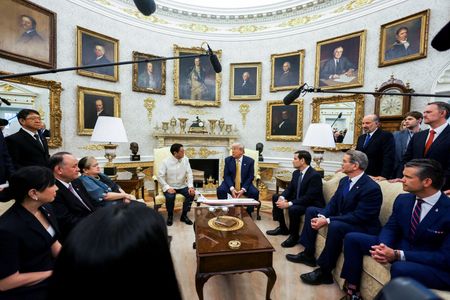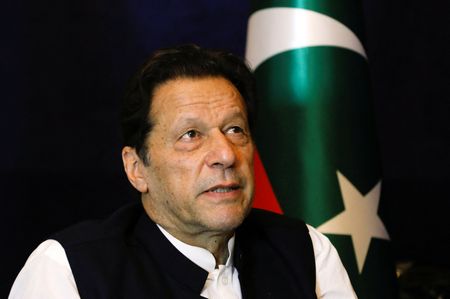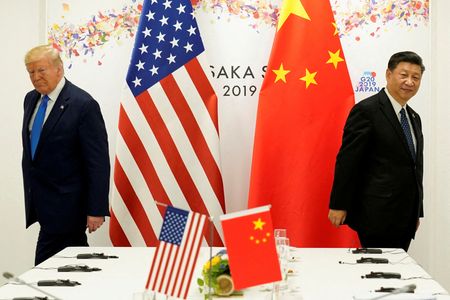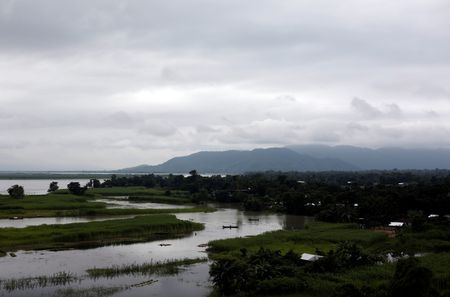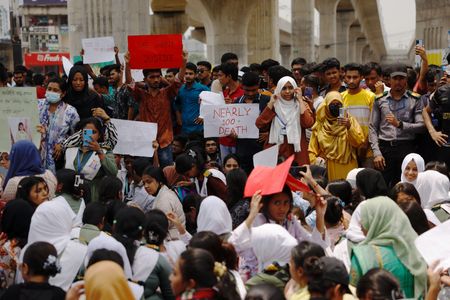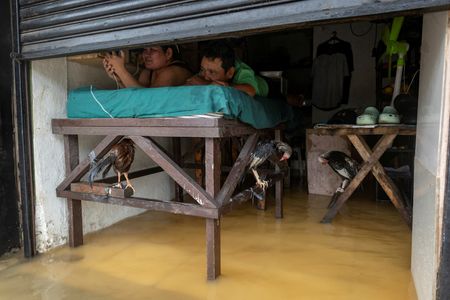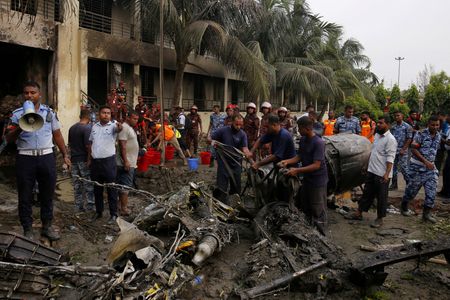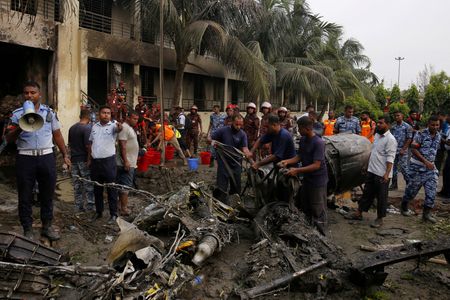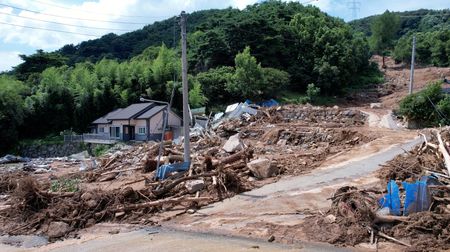By Andrea Shalal and Trevor Hunnicutt
WASHINGTON (Reuters) -U.S. President Donald Trump announced on Tuesday a new 19% tariff rate for goods from the Philippines after what he called a “beautiful visit” by Philippine President Ferdinand Marcos Jr. to the White House, and said U.S. goods would pay zero tariffs.
The new tariff rate is just below the 20% threatened by Trump earlier this month, but still above the 17% rate set in April when Trump announced what he called reciprocal tariff rates for dozens of countries. It matches the 19% rate announced for Indonesia and bests Vietnam’s slightly higher rate of 20%.
Trump posted the news on his Truth Social media platform after meeting with Marcos in the Oval Office, where he had earlier signaled a deal could be reached during the visit.
“It was a beautiful visit, and we concluded our Trade Deal, whereby The Philippines is going OPEN MARKET with the United States, and ZERO Tariffs. The Philippines will pay a 19% Tariff,” Trump said, calling Marcos a “very good and tough negotiator.”
Trump said the two Pacific allies, who will celebrate 80 years of diplomatic relations next year, would also work together militarily but gave no details.
Marcos, the first Southeast Asian leader to meet Trump in his second term, told reporters at the start of the meeting that the United States was his country’s “strongest, closest, most reliable ally.”
He had no comment after Trump’s post on the new tariff rate.
Trump said the “very big numbers” in the trade agreement would only grow larger. The U.S. had a deficit of nearly $5 billion with the Philippines last year on bilateral goods trade of $23.5 billion.
Trump has upended global trade flows with tariffs on nearly every trading partner, with almost all countries facing a 10% tariff that took effect in April and many facing steep additional tariffs from August 1.
Gregory Poling, a Southeast Asia expert at Washington’s Center for Strategic and International Studies, said it was too early to say much about the Philippines trade deal since no details had been released, as was the case with similar pacts with Indonesia and Vietnam.
“At the end of the day, I don’t think the Philippine government is sweating the final number so long as it keeps Philippine-made goods competitive with those of its neighbors, which this does,” Poling said.
The White House announced further details of a framework for a U.S.-Indonesia trade agreement on Tuesday, saying negotiators were due to finalize the terms in coming weeks.
During the Oval Office event, Trump said he may visit China for a landmark trip “in the not-too-distant future” and noted the Philippines had distanced itself from Beijing after his election last November.
“The country was maybe tilting toward China, but we un-tilted it very, very quickly,” Trump said.
Philippine officials had said Marcos planned to stress that Manila must become economically stronger if it is to serve as a truly robust U.S. partner in the Indo-Pacific.
Protesters gathered near the White House as Marcos arrived, demanding the Philippine leader address pleas of Filipino Americans and migrant workers who have made multiple requests for support amid federal immigration raids.
(Reporting by Andrea Shalal and Trevor Hunnicutt; additional reporting by David Brunnstrom in Washington; editing by Ross Colvin, Deepa Babington, Rod Nickel and Nia Williams)

